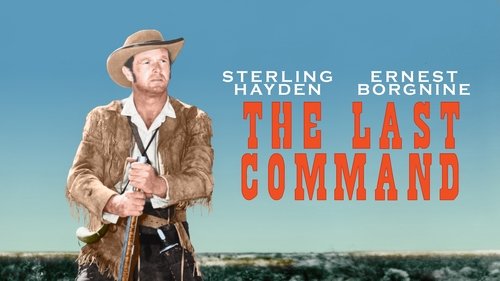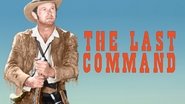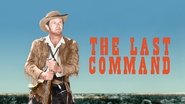Roy Hart
If you're interested in the topic at hand, you should just watch it and judge yourself because the reviews have gone very biased by people that didn't even watch it and just hate (or love) the creator. I liked it, it was well written, narrated, and directed and it was about a topic that interests me.
Michael O'Keefe
This Republic picture can stand tall in the shadow of the other Alamo movies from major studios. Director Frank Lloyd presents a film that is similar to another Republic flick...Man of Conquest released in 1939. This movie actually has that feel of major studio about it. Terrific camera angles. There are heroes and there are heroes. This time Jim Bowie(Sterling Hayden)takes the lead. Patriot Sam Houston has stirred up his share of faithful Texicans and closed minded men become anxious and unsure of the future. Texas is threatened by the armies of Mexican general Santa Ana(J. Carrol Naish)and a coexistence policy of Bowie's is not sitting well. The arrival of Davy Crockett (Arthur Hunnicutt)is like a ray of hope for courageous defenders assembled in the Alamo. A confrontation with Santa Ana seems nearing and any thoughts of reinforcements for the Texicans is dashed.Factual history is sidestepped for the sake of the movie. William Travis(Richard Carlson)agrees to share leadership with Bowie. It is a last-ditch stand with the overly outnumbered defenders of Texas and the Alamo dig in for one hell-of-a battle. A last man standing affair. Santa Ana can gloat, but not for long. Brilliant hand-to-hand combat sequences. The battle is realistic enough to almost smell the gunpowder. Actuality aside, this movie is well worth seeing.Other players featured: Ernest Borgnine, Jim Davis, Otto Kruger, Ben Cooper, Virginia Grey, John Russell, Slim Pickens and the beautiful Anna Maria Alberghetti.
mcdowellsn
The movie was shot at what today is called "The Alamo Village" in Blackettville Texas. It was not built for the 1960 John Wayne film "The Alamo",but Wayne did add a few temporary buildings that were torn down after the film was done. The 1980's TV film " The Alamo-13 days to Glory" was also filmed there. The is only a very small John Wayne museum at the Village. It is almost 200 miles from the real Alamo. Unlike the 2004 film,this too had the battle of the Alamo fought in the daylight and not at night. But Hayden at least was the same size as the real Jim Bowie.The real Bowie was about 6 feet 6 as was Hayden. The story was that Republic wanted John Wayne to play Bowie,but he went to South America to look for a place to do this film and when came back he was "fired" by the studio.
Ben Burgraff (cariart)
'The Last Command' is a film with a better backstory than the film itself! First batted around Republic Pictures as a potential vehicle for John Wayne, the production was put on the back burner when Wayne decided he wanted total creative control, and decided to produce and direct his own version, with a budget Republic couldn't match.Republic DID, however, have an arsenal of talent available, and a shooting script, and eventually brought in veteran director Frank Lloyd, who had just come off a ten-year hiatus with 'The Shanghai Story', in 1954. Sterling Hayden, fresh from the cult classic 'Johnny Guitar', and a featured role in Fox's lavish 'Prince Valiant', signed to play Jim Bowie ("I needed the money to refit my boat," he joked). Richard Carlson, whose 'Creature from the Black Lagoon' had just been released by Universal (becoming a big hit) was tapped to play Alamo commander William Barret Travis. Ernest Borgnine, whose 'Marty' was garnering rave reviews (and would earn him an Oscar) took on the showy supporting role of Bowie adversary/friend Mike Radin and starlet Anna Maria Alberghetti, in her first non-singing role, became the female lead. Two veteran character actors rounded out the major cast: J. Carrol Naish, as a sympathetic yet decisive Santa Anna, and, in an offbeat but inspired casting move, bearded Arthur Hunnicutt as a rustic Davy Crockett (who would very nearly steal the film!).The production was very modestly budgeted, so much so that the number of extras serving as the Mexican army was limited, but director Lloyd and cinematographer Jack Marta were old hands at making more out of less, and with some judicious editing by Tony Martinelli, the illusion of thousands of Mexican soldiers was achieved. Set design was minimal, as well, and the famous 'look' of the church/fortress was often achieved through mat paintings.Scored by the legendary Max Steiner, with a theme sung by Gordon MacRae, 'The Last Command' seemed to teeter at the edge between 'B' movie and 'A' status; ultimately, the pedestrian script, by Sy Bartlett and Warren Duff, did the movie in, as there was too much time spent on an unnecessary love triangle, which slowed much of the film to a crawl. Despite an unforgettable final battle, audiences avoided the film, and it quickly faded from sight.Unfortunately, John Wayne didn't learn from 'The Last Command', and he added a love story to his 'Alamo', with the same lethargic result; Crockett's explosive demise (historically inaccurate, but rousing!) must have impressed him, as well, as he staged an even bigger version of it in his film.'The Last Command' is a curio, but is enjoyable, for the most part, and the spectacular final assault makes it a must for any action fan's collection!





